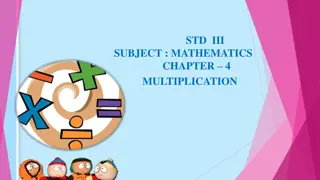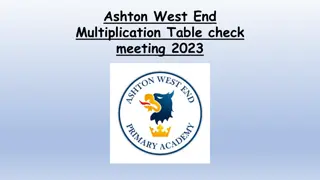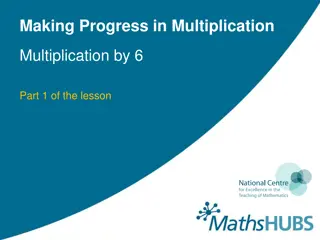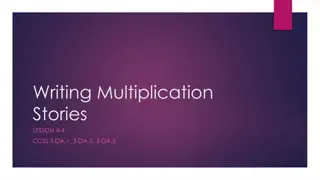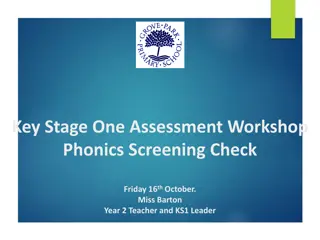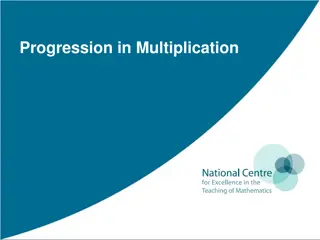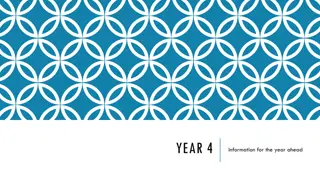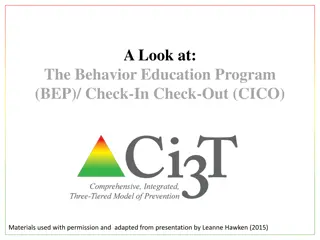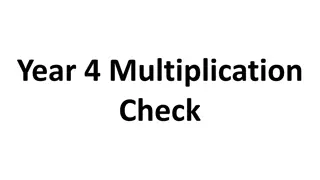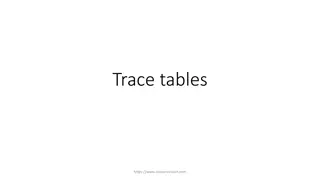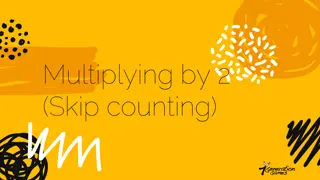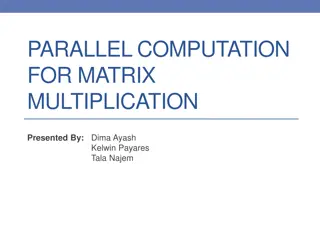
Year 4 Multiplication Check: Importance, Practice, and Results
Discover the Year 4 multiplication check aiming to assess fluency in times tables up to 12x12. Learn when and how it is conducted, what it evaluates, and how results are reported, emphasizing the importance of verbalizing multiplication facts for enhanced learning.
Download Presentation

Please find below an Image/Link to download the presentation.
The content on the website is provided AS IS for your information and personal use only. It may not be sold, licensed, or shared on other websites without obtaining consent from the author. If you encounter any issues during the download, it is possible that the publisher has removed the file from their server.
You are allowed to download the files provided on this website for personal or commercial use, subject to the condition that they are used lawfully. All files are the property of their respective owners.
The content on the website is provided AS IS for your information and personal use only. It may not be sold, licensed, or shared on other websites without obtaining consent from the author.
E N D
Presentation Transcript
Multiplication Tables and the Year 4 Check
What is the purpose of the check? To determine whether year 4s can fluently recall their times tables or not.
When will it happen? Towards the end of year 4 June 2021 over a three week period. We can choose when to administer in that time.
What does it check? By the end of year 4 children should be able to fluently recall their multiplication AND division facts up to 12 x12 It only assesses the instant recall of multiplication facts. There is an emphasis on 6,7,8 ,9 and 12 are these are deemed the most difficult.
What does it look like? Five minutes to complete 25 questions worth one mark each 6 seconds to enter a response from the time the question appears Once entered they can proceed or wait for the time to be up 3 seconds before next question appears There will be a practice area before the window opens.
How are results reported? A total score out of 25 is reported at the end of the check for each child and schools are judged on how many children scored 100%.
When do children learn the different facts? IT DOES NOT START IN 4 Year 1 are counting in different amounts, particularl1s 2s, 5s and 10s. Year 2 learn multiplication facts 1s 2s, 5s, 10s Year 3 learn 3s 4s and 8s ( in that order) and keep1s 2s 5s 10s going including division facts i.e. 4 times 5 is 20, so 20 divided by 5 is 4. Year 4 learn then 6s and 7s 9s 11s 12s and keep the others going. Year 5 all multiplication facts and division facts include squares and multiples of 10 and 100 Year 6 include application such as percentages, squares, cubes, decimals
Language focus When children commit multiplication table facts to memory, they do so using a verbal sound pattern to associate the 3 relevant numbers, for example, six fours are twentyfour . It is important to provide opportunities for pupils to verbalise each multiplication fact as part of the process of developing fluency
How will Wensley Fold prepare? Explicitly teach the times tables in appropriate year groups and classes Chanting , singing , clapping Y2 ( summer) Y3,4,5,6-weekly tables tests ( 10 minutes on a Monday) aiming to get 25,50,75,100 in ten minutes. Certificates awarded in Friday assemblies. ( bronze, silver, gold, platinum). Names to Jackie in the office on Monday. Battles of the classes with Times Tables Rock Stars shared in assembly each week. League board up in school.



